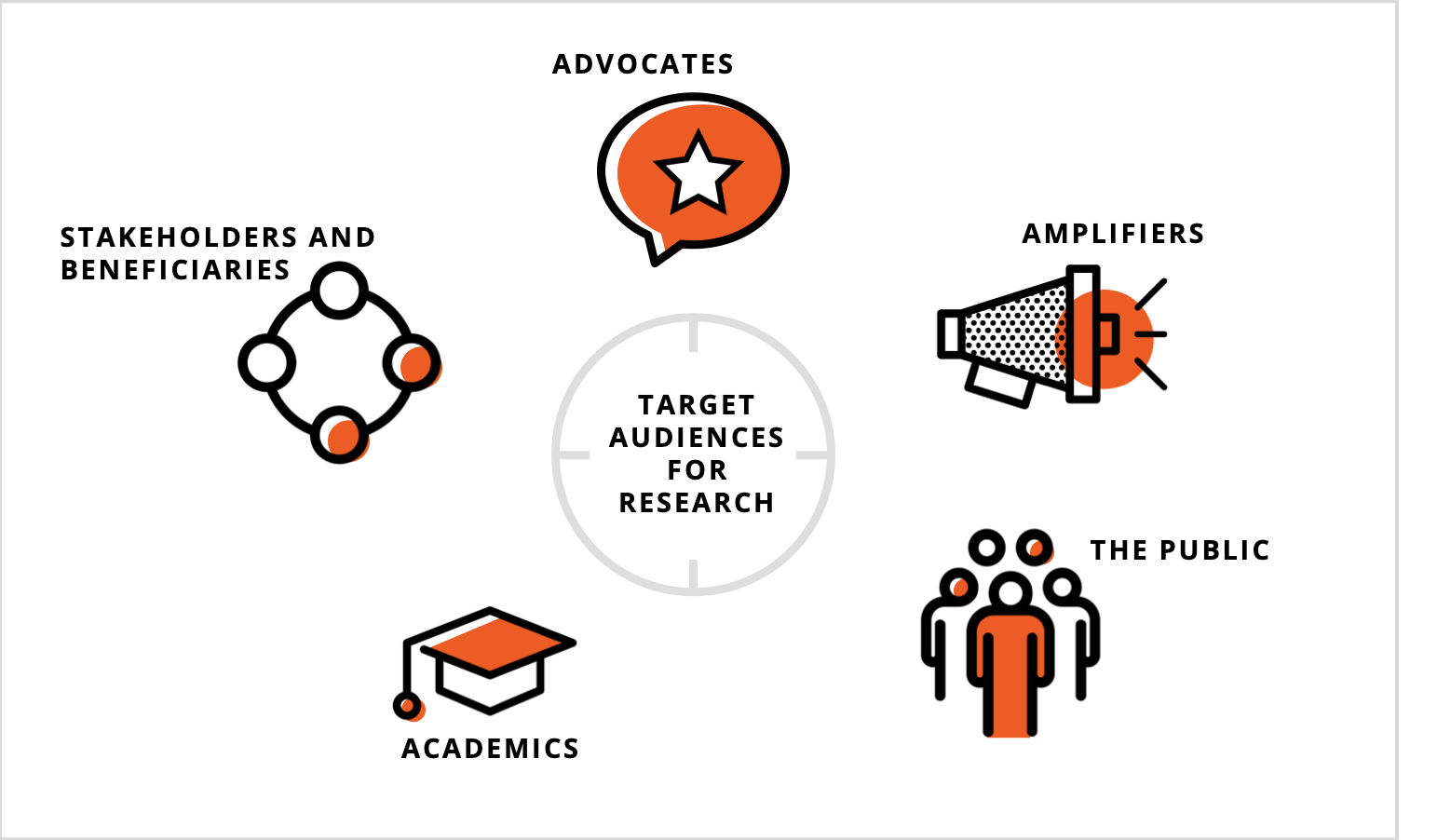I’ve been working in research communications for 20 years now, during which time I have answered a lot of questions from researchers! Many of these questions came up again during the Q&A of our recent webinar, so we thought it would be useful to provide answers here to some of the most common questions.
Got a question that I don’t answer below? Feel free to send it to me and I’ll try to answer it in a future post!
- I know I’m expected to maximize the impact of my work, but I’m worried that it will take up time and money that I don’t have. How do other researchers manage this?
- Isn’t research impact really just down to the quality of the research? Why should I be trying to maximize impact in any way other than ensuring my work is of the highest quality?
- I publish in the best journals I can, which means my work is going to be found and read by all the important researchers in my field. So I don’t need to do anything else – right?
- Which audiences should I target, and how?
- In terms of taking a more active approach to planning my communications and impact – where should I start?
1. I know I’m expected to maximize the impact of my work, but I’m worried that it will take up time and money that I don’t have. How do other researchers manage this?
 In terms of budget: many research funders now make provision for communications, engagement and impact within a grant – usually between 3% and 10% of the grant value is allowable for these kinds of activities. This funding support is typically aimed at reaching outside of academia, so is separate to funding for publication expenses or attending academic conferences. Sometimes large funders such as governments will also have separate schemes for supporting impact activities, such as the UK’s Impact Acceleration Accounts. Your university’s research office should be able to advise you on KEI (knowledge exchange and impact) funding opportunities.
In terms of budget: many research funders now make provision for communications, engagement and impact within a grant – usually between 3% and 10% of the grant value is allowable for these kinds of activities. This funding support is typically aimed at reaching outside of academia, so is separate to funding for publication expenses or attending academic conferences. Sometimes large funders such as governments will also have separate schemes for supporting impact activities, such as the UK’s Impact Acceleration Accounts. Your university’s research office should be able to advise you on KEI (knowledge exchange and impact) funding opportunities.
In terms of time: the key is to take a relatively scientific or evidence-based approach to your communications activities. You are probably already doing a lot of things to communicate your work (a 2018 survey showed academics spend on average 2.5 hours per week on dissemination and impact), without fully logging these activities or measuring the effort or results. Using tools to track and evaluate your research impact activities can help you see what’s working more or less well. Most people, when they start taking this more structured approach, find they can actually save time overall by cutting down on activities that aren’t really getting any response.
2. Isn’t research impact really just down to the quality of the research? Why should I be trying to maximize impact in any way other than ensuring my work is of the highest quality?
 Of course your research should be of a good quality – well designed and executed, with accurate analysis and reasonable interpretation – and useful. But there is a difference between ‘of potential use’ and ‘actually being used’. As I said in the webinar, ‘Your findings will not be able to deliver any kind of change if no-one knows about them.’ With so much research now being funded, undertaken, and disseminated, it is much harder than it used to be to ensure that your work is found, understood and applied by the people who could act on or benefit from your findings. There is no guarantee that quality work will actually achieve its impact potential, so you need to be proactive on both fronts. On a practical level, that means taking steps to “mobilize your research” – ensuring that audiences discover, connect with, understand, and apply your work.
Of course your research should be of a good quality – well designed and executed, with accurate analysis and reasonable interpretation – and useful. But there is a difference between ‘of potential use’ and ‘actually being used’. As I said in the webinar, ‘Your findings will not be able to deliver any kind of change if no-one knows about them.’ With so much research now being funded, undertaken, and disseminated, it is much harder than it used to be to ensure that your work is found, understood and applied by the people who could act on or benefit from your findings. There is no guarantee that quality work will actually achieve its impact potential, so you need to be proactive on both fronts. On a practical level, that means taking steps to “mobilize your research” – ensuring that audiences discover, connect with, understand, and apply your work.
3. I publish in the best journals I can, which means my work is going to be found and read by all the important researchers in my field. So I don’t need to do anything else – right?
 Wrong! Around the world, research funders and institutions are increasingly valuing real-world impact as much as or more than academic impact. If you want to maintain your reputation as an excellent researcher, you need to focus on reaching and influencing audiences beyond academia. In any case, even publishing in the best journal in your field doesn’t mean that all the other researchers in your field will read your work, because most now struggle with information overload and will no longer keep up with as much of the literature as they would like to. More importantly, journals will mostly only be read by other academics. You will struggle to develop that readership into real-world change unless you take active steps to communicate your research to the real world.
Wrong! Around the world, research funders and institutions are increasingly valuing real-world impact as much as or more than academic impact. If you want to maintain your reputation as an excellent researcher, you need to focus on reaching and influencing audiences beyond academia. In any case, even publishing in the best journal in your field doesn’t mean that all the other researchers in your field will read your work, because most now struggle with information overload and will no longer keep up with as much of the literature as they would like to. More importantly, journals will mostly only be read by other academics. You will struggle to develop that readership into real-world change unless you take active steps to communicate your research to the real world.
4. Which audiences should I target, and how?

This will depend on the kind of work you do, but broadly speaking there are 5 categories:
 Other academics – although (as above) you should never think only about the academic audience or impact for your work, this is still an important audience as it will ensure that further research in the field builds on, rather than replicating, what you have already done. Publishing (in journals, monographs, book chapters and so on) will certainly help you achieve an academic audience, but don’t forget that your academic peers also take information in in lots of different ways – visual summaries, video abstracts, posters and presentations are also good for reaching your academic audiences.
Other academics – although (as above) you should never think only about the academic audience or impact for your work, this is still an important audience as it will ensure that further research in the field builds on, rather than replicating, what you have already done. Publishing (in journals, monographs, book chapters and so on) will certainly help you achieve an academic audience, but don’t forget that your academic peers also take information in in lots of different ways – visual summaries, video abstracts, posters and presentations are also good for reaching your academic audiences. Beneficiaries – ranging from patients living with the particular healthcare condition that you are researching, or communities suffering from the particular social or environmental problem in which you are expert, to companies who could apply your findings to improve product specifications or processes, or organizations that could update their activities or policies to reflect your recommendations. (Professor Mark Reed provides excellent guidance on how to identify beneficiaries and stakeholders.) You will need both one-way communications (such as handouts, postcards, flyers, booklets, infographics and videos) and two-way communications (such as workshops, consultancy, letters and emails).
Beneficiaries – ranging from patients living with the particular healthcare condition that you are researching, or communities suffering from the particular social or environmental problem in which you are expert, to companies who could apply your findings to improve product specifications or processes, or organizations that could update their activities or policies to reflect your recommendations. (Professor Mark Reed provides excellent guidance on how to identify beneficiaries and stakeholders.) You will need both one-way communications (such as handouts, postcards, flyers, booklets, infographics and videos) and two-way communications (such as workshops, consultancy, letters and emails). Advocates – people with a shared interest in your work, who can help to raise awareness and uptake of your findings. Examples include educators, healthcare practitioners, charities, lobbying organizations or policy makers in relevant fields. For the most part, your efforts will be most effective if you engage on as personal a level as possible, for example, through emails, phone discussions, and meetings. It will help if you can provide (or follow up with) materials that they can distribute to others in their networks – for example, printed booklets, or postcards, or digital information sheets and slides.
Advocates – people with a shared interest in your work, who can help to raise awareness and uptake of your findings. Examples include educators, healthcare practitioners, charities, lobbying organizations or policy makers in relevant fields. For the most part, your efforts will be most effective if you engage on as personal a level as possible, for example, through emails, phone discussions, and meetings. It will help if you can provide (or follow up with) materials that they can distribute to others in their networks – for example, printed booklets, or postcards, or digital information sheets and slides. Amplifiers – journalists and influencers can help you reach a ready-made audience in traditional and social media, respectively. In both cases, you should try to make contact directly (with the most relevant person – judging by other articles they have written or content they have shared). Your university or employer may have a press office and prefer you to channel all communications through their network, but if you are trying to do this yourself, then it’s a good idea to create a briefing specifically for journalists and influencers, summarizing the key points that should attract their attention (and that of their audiences). It will help if you can provide images and quotes to bring anything they write to life.
Amplifiers – journalists and influencers can help you reach a ready-made audience in traditional and social media, respectively. In both cases, you should try to make contact directly (with the most relevant person – judging by other articles they have written or content they have shared). Your university or employer may have a press office and prefer you to channel all communications through their network, but if you are trying to do this yourself, then it’s a good idea to create a briefing specifically for journalists and influencers, summarizing the key points that should attract their attention (and that of their audiences). It will help if you can provide images and quotes to bring anything they write to life. The public – you may also need to communicate directly with the general public, for example, through events at museums, galleries or schools, open days at your institution, or social media. It can be helpful to create materials to support these activities, both to help make your message more memorable, and to help you track people’s interest in your work. For example, you might make images, videos or slides for digital use, or print materials such as handouts, postcards, ‘business’ cards or even ‘freebies’ such as pens or coasters. (Kudos Pro can help you track the effectiveness of all these communications efforts – even the pens and coasters!)
The public – you may also need to communicate directly with the general public, for example, through events at museums, galleries or schools, open days at your institution, or social media. It can be helpful to create materials to support these activities, both to help make your message more memorable, and to help you track people’s interest in your work. For example, you might make images, videos or slides for digital use, or print materials such as handouts, postcards, ‘business’ cards or even ‘freebies’ such as pens or coasters. (Kudos Pro can help you track the effectiveness of all these communications efforts – even the pens and coasters!)
5. In terms of taking a more active approach to planning my communications and impact – where should I start?
This is a relatively new area of focus for academics. While many of your peers have begun to make more time and budget available for communications (even hiring members of their research team specifically to focus on this area), you won’t be alone if you have not yet made a start and need some guidance. Many universities and funders have created handbooks and training to help researchers learn more about communications planning, pathways for impact and public engagement – for example:
- The Economic and Social Research Council
- The Health Foundation
- UK Research and Innovation
- The National Co-ordinating Centre for Public Engagement
At Kudos, we’ve written our own handbook to help you “mobilize your research” (see below) – you can download this for free – and of course we have developed Kudos Pro to help you create, manage, measure and report on a communications plan for your research project.

Related posts:
- Research impact: what it is, why it matters, and how you can increase impact potential
- What is research mobilization? Or, how do I develop the impact potential of my research?
- Kudos Pro: helping you accelerate impact through research mobilization

